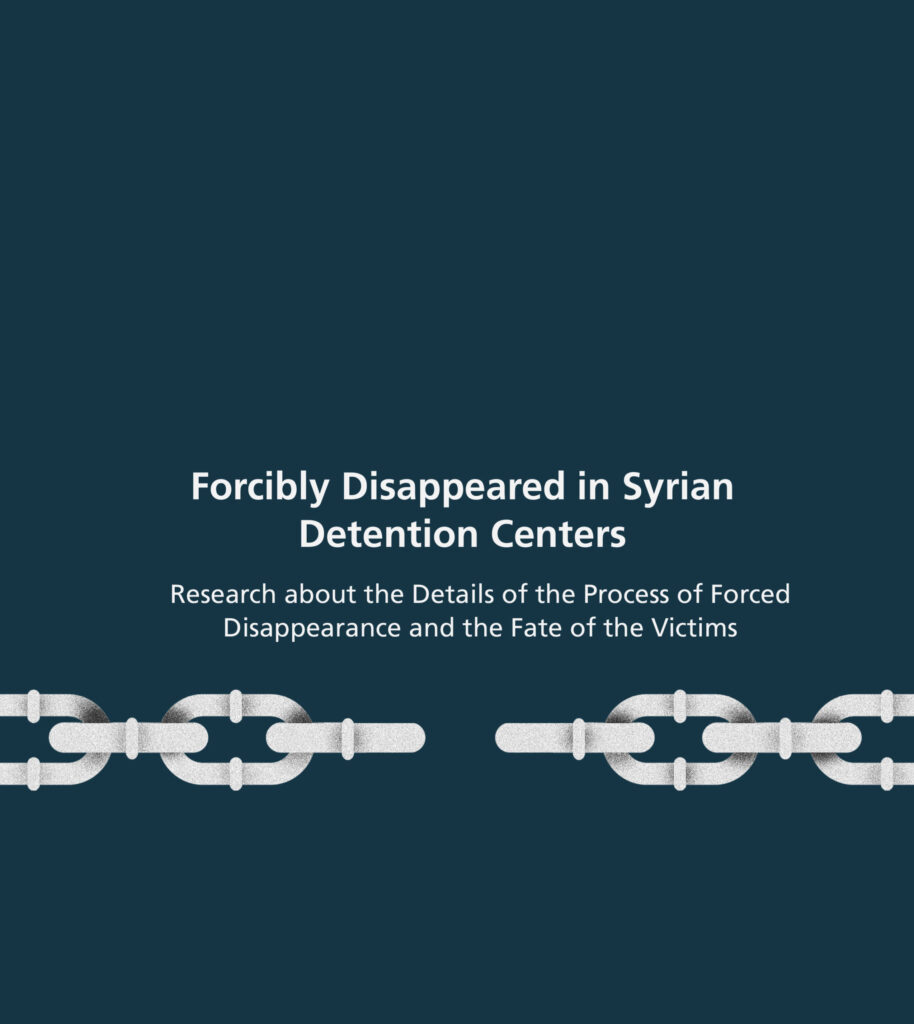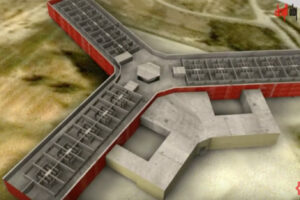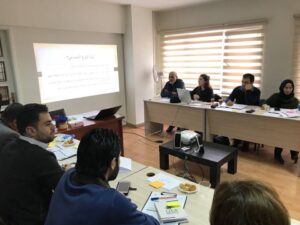Gaziantep, Turkey
The Association of Detainees and The Missing in Sednaya Prison (ADMSP) stated in its first report, which monitors cases of forced disappearance, that the regime in Syria “uses forced disappearances and arrests as a way to reap and accumulate wealth and to increase the influence of security services, their leaders, influential people in its government, some judges and lawyers.”
Based on 508 face-to-face interviews that have been conducted by ADMSP with families of forcibly disappeared persons since the fall of 2018 to this day, the report provides accurate information about what happened (and is happening) with the forcibly disappeared persons, how this process is taking place, what are the main governmental apparatus involved in it, when did enforced disappearances reach their peak, where most of the enforced disappearances and arbitrary arrests in Syria were taking place, and how these operations generate a huge financial income for the regime’s security apparatus.
According to the report, 2012 is considered the year of forced disappearances in Syria. The Syrian Arab Army is responsible for more than a third of the total forced disappearance cases that took place in the country, followed by the Military Security Division which is responsible for at least 19%, then come the Air Force Intelligence Directorate and the Political Security Division that are responsible for around 5%.
Most of the forced disappearances have taken place in Damascus and Idlib Governorates. Sednaya prison is favored by the regime as the place to detain forcibly disappearance individuals.
The report provides information on the places where the forcibly disappeared persons are predicted to be, and states that the majority of the disappeared persons were last seen alive in detention centers affiliated to the Ministry of Defense. This means that this entity holds the primary responsibility for forced disappearances. In addition, more than half of the disappeared persons were seen in detention centers that were affiliated to the Military Police. Sednaya prison tops the list of those detention centers responsible for forced disappearances, since it is responsible for more than 80% of the cases.
Diab Sariya, co-founder and coordinator of the Association of Detainees and The Missing in Sednaya Prison (ADMSP) says that this report is the first of its kind in which issues of forced disappearance and detention are separated, even though the separation between them is very difficult, since each detainee was once a forcibly disappeared person project in Syria. The data and information provided by the report show that the regime in Syria does not only practice forced disappearance against political opponents, but rather also targets individuals whose families it believes it can collect money from. This allows it to eventually accumulate wealth and influence for the commanders, chiefs of security services and some influential people in the regime’s government”.
The report devotes an entire chapter to the financial extortion that the families of the forcibly disappeared persons and the detainees are subjected to. The report reveals information and numbers related to the fact that the Syrian regime has collected nearly 900 million US dollars (868,900,573 US dollars to be exact) since 2011 until this date from the financial extortion that it practiced against the families in exchange for information about their loved ones or promises to allow them to visit them in places of detention or release them.
The report also monitors the challenges that families face as they search for their loved ones and try to obtain information relating to their fate or place of detention.
The families often obtain such information from survivors (previous detainees who were released) who communicate with them after they are released.
As reported, this source (previous detainees) provided information to 68% of the respondents about the fate of the forcibly disappeared person and 48% about the prison/detention center where the forcibly disappeared person is.
Only 4% were able to visit the forcibly disappeared persons and more than half of the respondents said that the main reason for not visiting was the fear of arrest when asking about a forcibly disappeared person. One third of the respondents said that the authority that arrested the forcibly disappeared person does not recognize his/her presence in its detention centers






